Tariffs 101: What are they and how do they work?
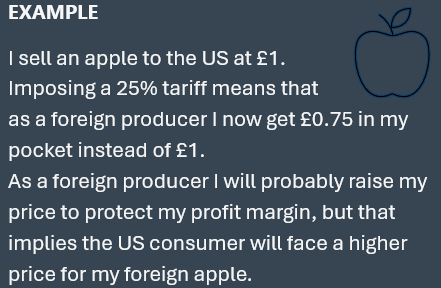
What are tariffs?
Tariffs are taxes imposed by a government on goods and services imported from other countries. Think of tariff like an extra cost added to foreign products when they enter the country. They’re usually a percentage of the price of the goods. The level of the tariff will affect the significance of its impacts.
Why do governments impose tariffs:
- Raise government revenue– tariffs serve as a source of income for governments.
- Protect domestic industries and correct trade imbalances– tariffs shelter domestic industries from foreign competition and discourage consumption of imported goods.
- Political tool for negotiations– tariffs can be used to apply pressure on the foreign government they are imposed on, as part of a trade negotiation or a political tool.
For example, the Trump administration has justified imposing tariffs on Canada, Mexico and China, to pressure foreign governments into addressing illegal immigration and drug trafficking, while also addressing the size of the country’s trade deficit.
See how Oxford Economics can help you navigate the tariff changes
Get in touchWhat impact do tariffs have on the economy imposing them?
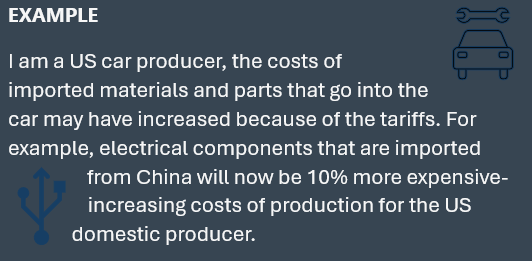
Domestic industries may benefit from reduced foreign competition. If foreign goods are now relatively more expensive, this would drive up demand for domestic products, allowing domestic industries to expand and increase production.
However, some domestic industries have global supply chains that rely on imported materials and parts. As prices of imported materials and parts increase, domestic producers may face higher costs of production. If the domestic producers pass higher costs of production onto consumers, it will also push up prices of domestically produced goods.
Notably, the economies that are initially ‘tariff imposers’ may end up facing retaliatory tariffs, which has been the case in the current climate. Below we highlight some potential tariff impacts on the economies tariffs are imposed on.
What impact do tariffs have on the economies they are imposed on?

In the country that tariffs are imposed on targeted industries will face lower export demand. As their goods have become relatively more expensive in the importing country, it will lead to lower sales and lost market share, as consumers switch to relatively cheaper domestic goods. The degree of this decline depends on the price elasticity of demand, how much consumers adjust their purchases of imports in response to the higher prices caused by the tariffs. This may be the case for example if there are few alternatives in the domestic market, or consumers have a strong brand preference.
The extent of the impact will depend on how much of the country’s production is exports, and particularly, exports to the country imposing the tariff. In Canada, for example, exports make up 33% of Gross Domestic Product and exports to the US specifically are 20% of Gross Domestic Product.
Industries in countries that tariffs are imposed on may adjust their export strategies to minimize losses, by seeking other markets to sell to with more favourable tariff regimes. Yet, redirecting trade to alternative markets comes with its challenges: including regulatory barriers, logistics and distribution costs – establishing new supply chains takes time and investment, and existing competition may be well established in alternative markets.
For latest reports on trade and tariffs, please visit our topic page.
Related content

Trade tracker – Tariff impacts continue to build
US tariff rates are climbing to levels not seen since the 1930s, with world trade expected to decline and inflation set to rise. What could this mean for global markets and economic growth?
Find Out More
Understanding Australia’s Goods Trade Dynamics in 2025
2. Explore Australia's goods trade dynamics, with rising exports and falling imports. Learn how global demand impacts the trade balance and future projections.
Find Out More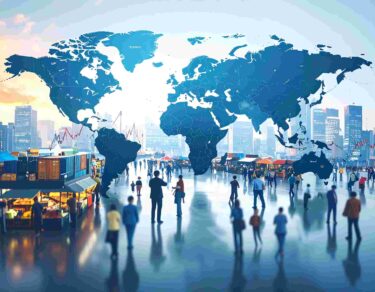
US tariffs and the uneven impact across cities in Europe and Asia
The latest US tariffs are reshaping global trade patterns, hitting some cities harder than others. From Germany’s auto hubs to China’s electronics exporters, which regions will weather the storm and which will struggle?
Find Out More
Five lessons for businesses navigating tariffs and trade turmoil
In a rapidly evolving global trade environment, businesses must stay ahead of changing tariffs and regulatory demands. Our latest blog offers practical guidance on navigating tariffs, understanding key trade strategies, and leveraging accurate HS code classifications to optimize your supply chain. Explore essential insights that will help your business manage trade uncertainty, ensure compliance, and unlock new growth opportunities.
Find Out More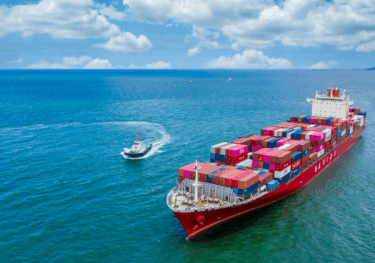
The Future of Trade: Tariffs, Taxes, and Economic Trends
Amid ongoing global trade uncertainty, business leaders are struggling to plan ahead as new tariffs continue to reshape the market. Even so-called “locked-in” tariffs are proving to be temporary, adding to the unpredictability. Firms are cautious, waiting for clarity before committing to major investments. As global trade volumes decline, the importance of understanding every relevant trade tariff and accurately applying the correct HS code to imported goods becomes even more critical for managing costs and compliance.
Find Out More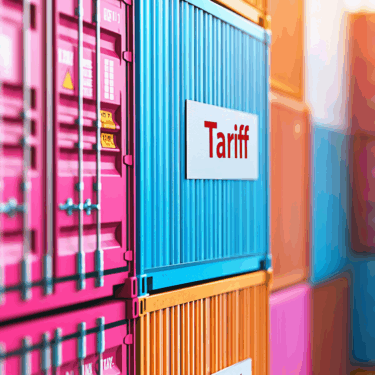
Fresh tariffs redraw trade map
Trump’s latest tariffs favour Australia and Singapore with unchanged 10% rates, while Brazil faces a sharp 50% hike. India, Vietnam, and Bangladesh continue to face some of the world’s highest effective tariffs despite recent declines.
Find Out More
Tariffs bite as August deadline looms
Research Briefing Tariffs 101: What are they and how do they work? Trade tensions escalate as new tariffs and policy uncertainty trigger sharp downturn in global shipping activity
Find Out More
Last-minute trade deal with the US leaves Eurozone outlook unchanged
We don't plan material changes to our Eurozone baseline forecast of 1.1% GDP growth this year and 0.8% in 2026 in response to the EU-US trade deal.
Find Out MoreTags:

